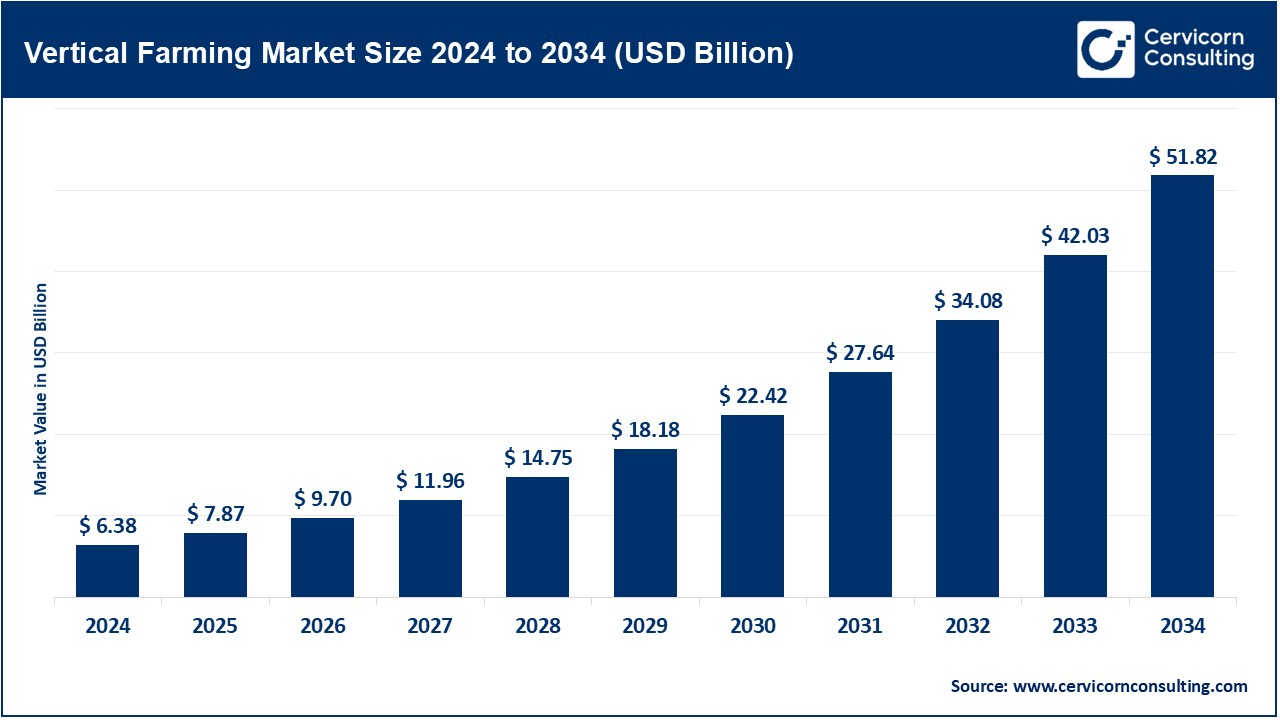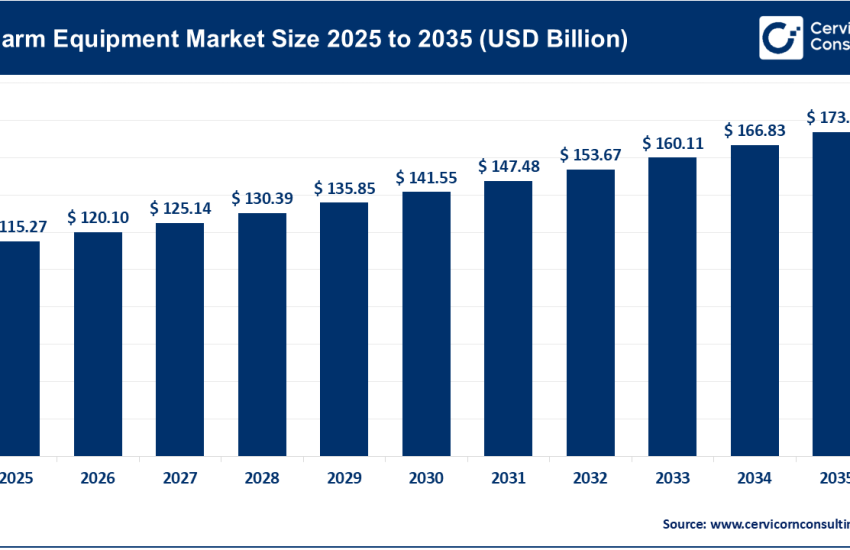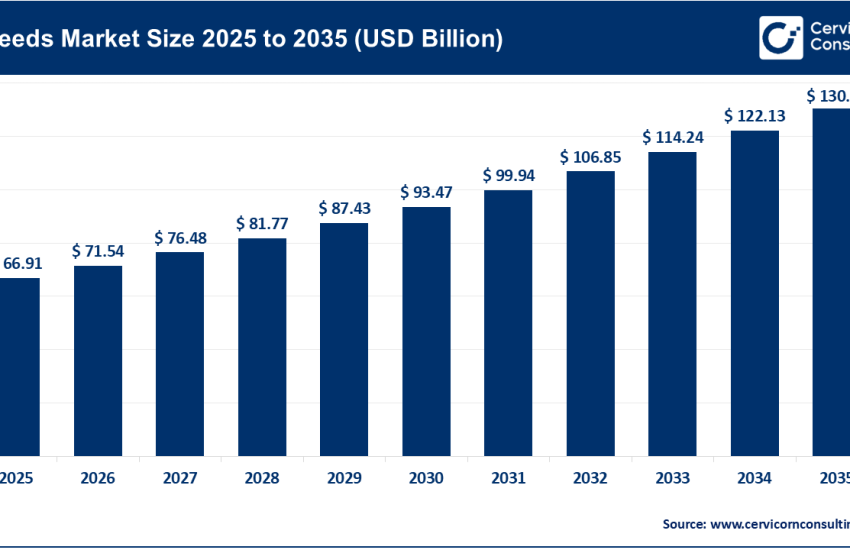Vertical Farming Market Size to Reach USD 51.82 Billion by 2034, at a CAGR of 23.3%
Vertical Farming Market Size and Growth
The global vertical farming market was worth USD 6.38 billion in 2024 and is anticipated to expand to around USD 51.82 billion by 2034, registering a compound annual growth rate (CAGR) of 23.30% from 2025 to 2034.
The vertical farming market has experienced significant growth in recent years, driven by factors such as increasing demand for fresh, locally produced, and pesticide-free food, advancements in technology like LED lighting and hydroponic systems, and the need for sustainable agricultural practices in urban areas.
Vertical farming is an innovative agricultural practice that involves growing crops in vertically stacked layers, often in controlled indoor environments. This method utilizes technologies such as hydroponics, aeroponics, and artificial lighting to optimize plant growth, allowing for year-round cultivation with reduced land use and water consumption.
The importance of vertical farming lies in its potential to address challenges associated with traditional agriculture, including land scarcity, climate change, and food security. By enabling food production in urban settings, vertical farming reduces the need for long-distance transportation, minimizes spoilage, and ensures a consistent supply of fresh produce.
Get a Free Sample: https://www.cervicornconsulting.com/sample/2602
Top Companies in the Vertical Farming Market:
ams-OSRAM AG
- Specialization: Optoelectronic semiconductors and sensor solutions.
- Key Focus Areas: Advanced lighting technologies for horticulture applications.
- Notable Features: Development of efficient LED systems tailored for plant growth.
- 2024 Revenue: EUR 3.43 billion .
- Market Share: Significant presence in the horticultural lighting segment.
- Global Presence: Operations spanning Europe, Asia, and the Americas.
Signify Holding
- Specialization: Lighting solutions, including LED and connected lighting systems.
- Key Focus Areas: Innovative lighting for vertical farming and greenhouse applications.
- Notable Features: Integration of IoT and data analytics in lighting systems.
- 2024 Revenue: EUR 6.1 billion .
- Market Share: Leading provider in the horticultural lighting market.
- Global Presence: Extensive operations across more than 70 countries.
Heliospectra AB
- Specialization: Intelligent lighting technology for controlled plant growth environments.
- Key Focus Areas: LED lighting systems optimized for various crop types.
- Notable Features: Integration of sensors and software for dynamic light control.
- 2024 Revenue: SEK 32.4 million .
- Market Share: Recognized player in the smart horticultural lighting niche.
- Global Presence: Headquartered in Sweden with a global customer base.
EVERLIGHT ELECTRONICS CO., LTD.
- Specialization: LED and optoelectronic components.
- Key Focus Areas: Development of LED solutions for plant growth and indoor farming.
- Notable Features: Wide range of horticultural lighting products.
- 2024 Revenue: Data not specified in the provided sources.
- Market Share: Active contributor to the vertical farming lighting market.
- Global Presence: Headquartered in Taiwan with international operations.
Urban Crop Solutions
- Specialization: Turnkey vertical farming systems and research.
- Key Focus Areas: Automated plant factories and tailored growth recipes.
- Notable Features: Modular farming solutions adaptable to various scales.
- 2024 Revenue: Data not specified in the provided sources.
- Market Share: Emerging player with innovative farming technologies.
- Global Presence: Based in Belgium with projects in multiple countries.
Leading Trends and Their Impact:
The vertical farming industry is witnessing several key trends:
- Technological Advancements: Integration of AI, IoT, and robotics is enhancing automation and efficiency in vertical farms.
- Sustainability Focus: Emphasis on reducing water usage and carbon footprint aligns with global sustainability goals.
- Urban Agriculture Growth: Increasing urbanization is driving the adoption of vertical farms in city environments to meet local food demands.
- Diversification of Crops: Expansion beyond leafy greens to include a variety of fruits and vegetables is broadening market potential.
Successful Examples of Vertical Farming Worldwide:
-
AeroFarms (USA): Operates one of the world’s largest vertical farms, supplying fresh produce to local markets and collaborating with partners like Singapore Airlines to provide in-flight meals.
-
Growing Underground (UK): Utilizes former air-raid shelters beneath London to grow herbs and salads, delivering produce to local retailers.
-
Green Monkey Farms (India): Based in Mangaluru, this startup specializes in hydroponic farming, offering pesticide-free vegetables to health-conscious consumers .
Global Regional Analysis and Government Initiatives:
- United States: The U.S. vertical farming market was estimated at USD 2.11 billion in 2024, with projections to reach USD 28.50 billion by 2034, driven by technological innovation and investment in sustainable agriculture.
- India: The Uttar Pradesh government aims to increase horticultural produce processing from 6% to 20% by 2027, investing in infrastructure and promoting protected farming techniques.
- Europe: Countries like the UK are exploring vertical farming to enhance food security, though challenges such as high energy costs pose obstacles to scalability.
- Asia-Pacific: Rapid urbanization and government support in countries like Singapore and Japan are fostering the growth of vertical farming initiatives.
These regional efforts underscore the global recognition of vertical farming as a viable solution to contemporary agricultural challenges.
To Get Detailed Overview, Contact Us: https://www.cervicornconsulting.com/contact-us
Read Report: Carbon Farming Market Size to Hit USD 2.17 Billion by 2034, Growing at 14.5% CAGR



